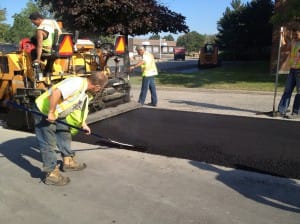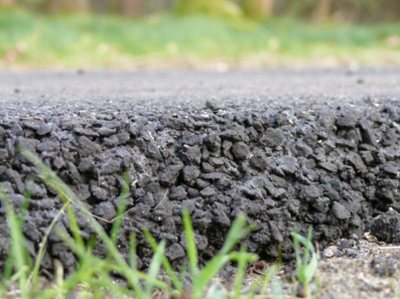Indicators on A1 Professional Asphalt & Sealing Llc You Need To Know
Indicators on A1 Professional Asphalt & Sealing Llc You Need To Know
Blog Article
A1 Professional Asphalt & Sealing Llc Things To Know Before You Get This
Table of ContentsThe Ultimate Guide To A1 Professional Asphalt & Sealing LlcGetting The A1 Professional Asphalt & Sealing Llc To WorkGetting My A1 Professional Asphalt & Sealing Llc To WorkAll about A1 Professional Asphalt & Sealing LlcThe Main Principles Of A1 Professional Asphalt & Sealing Llc

The oil in a vehicle engine is not just oil. The REOB includes all the additives that were in the waste oil as well as the wear steels from the engine (generally iron and copper).
By making many blends using different REOB samples and various asphalt binders, the variations mostly can be averaged out. A number of States gave samples of recognized REOB make-up to TFHRC scientists, that examined the examples to contrast the portion of included (known) REOB to the found (examined) quantity. The analyses revealed a comparable percentage of included and discovered REOB.
Little Known Questions About A1 Professional Asphalt & Sealing Llc.
They got an overwhelming response. The TFHRC scientists evaluated 1,532 samples from 40 States, one Canadian district, and 2 Government Lands Freeway departments. They assessed each example twiceamounting to even more than 3,000 evaluations. None of those States understood that the asphalt they were buying had REOB. One State urged its examples had no REOB.
Of the 1,532 samples checked, 12 percent contained REOB, and some contained significantly high levels of it at 1020 percent. The highest degree was 34 percent in an example from Texas, which TxDOT had actually made use of in a patching compound. This screening also disclosed the visibility of phosphoric acid in 11 percent of the examples, and 2 percent consisted of ground tire rubber.
Two years back at TRB's annual meeting, the Federal scientists held an REOB workshop and provided the findings of their laboratory analyses to a standing room-only group. Although some companies do not particularly outlaw REOB, they do enforce physical tests that prevent its useeffectively a ban. what is cold asphalt?. Others do not outlaw it by requirements, yet have agreements with asphalt vendors to stay clear of making use of REOB
Unknown Facts About A1 Professional Asphalt & Sealing Llc
A handful do enable REOB, some within particular limitations. Ohio and Texas limit degrees to much less than 5 percent of the asphalt. To create a dependable examination approach that all States can utilize, the TFHRC scientists set up a round-robin test strategy. The participants are 11 State highway companies (Illinois, Massachusetts, Minnesota, Mississippi, Montana, what is cold mix asphalt North Carolina, Oklahoma, South Carolina, Texas, Vermont, and Wyoming), 2 independent testing laboratories, the Ministry of Transportation in Ontario, Queen's College in Ontario, and an Ontario paving service provider.
In total amount, the researchers prepared and delivered 720 blends. The individuals are checking the examples independently making use of the guidelines offered by the TFHRC researchers. The round-robin screening is virtually finished, and TFHRC remains in the process of collecting the results. The outcome will certainly be a suggested AASHTO test approach that any State can adopt and use (what is cold asphalt?).
The pavement with REOB, which is situated 0.6 mile (1 kilometer) from the sidewalk without REOB, has identical subgrade, website traffic density, and environment. Nonetheless, the section of Highway655 with 5 to 10 percent REOB showed significant splitting. In this example, the visibility of REOB was the recognized reason for cracking at a low temperature levels.
A section of examination sidewalk in Minnesota (MN1-4) discovered to consist of REOB additionally cracked prematurely. The sidewalk carried out well for the initial 3 to 4 years, but then began to split.
A1 Professional Asphalt & Sealing Llc Fundamentals Explained
The examinations were not considerable, however they revealed that at degrees of 6 percent or more, the tensile strength of the asphalt went down considerably. At a degree of 3.5 percent REOB, the variant in the physical test techniques was better than the effect of REOB. Actually, it was challenging for scientists to assess whether REOB was present.

One binder specification taken into consideration is the distinction between the reduced temperature level vital spec temperature for stiffness (S) in the bending light beam rheometer and the flexing beam of light rheometer creep incline (m-value) kept in mind as Tcritical. TC = TC (S) TC (m-value). Assessment of this specification is still recurring. 2 independent research groups, one from AASHTO and the other from the Asphalt Institute, ended that more research is required on making use of REOB in asphalt.
Formerly, all asphalt testing gauged engineering buildings such as rigidity. These tests do not show what materials had actually been added to the asphalt.

Some Of A1 Professional Asphalt & Sealing Llc
These outcomes demonstrate there are weak points in the standard engineering testing procedures that may be exploited. The producer may have a financial advantage and the item passes all the standard examinations, however the product may not be useful to ensuring lasting efficiency. To address this concern and the expansion of brand-new asphalt additives and extenders, TFHRC is beginning a research program to use portable spectroscopic devices, x-ray fluorescence spectroscopy, and Fourier transform infrared spectroscopy to allow analyses to be carried out in the field rather than needing to take examples back to the laboratory.
Report this page